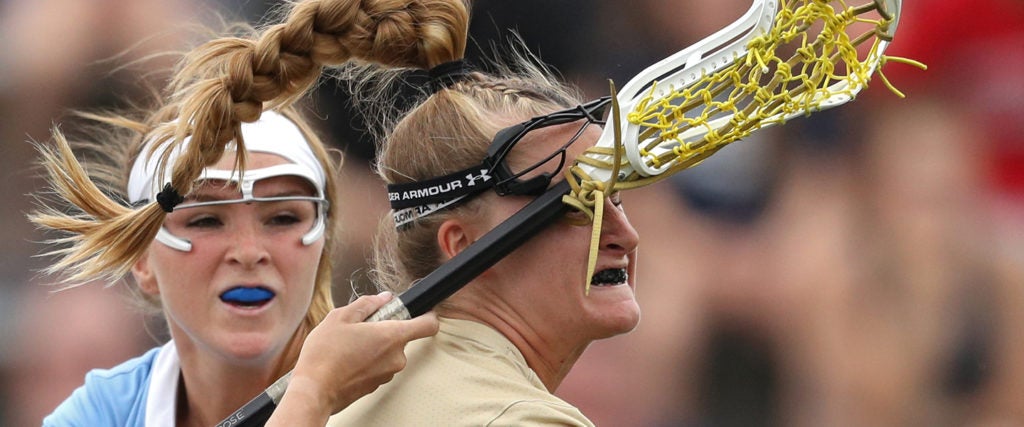Women’s lacrosse ranks second in rates of concussions in the U.S., usurped only by football. One glaring discrepancy is likely responsible for this: Men’s lacrosse requires headgear, while women’s lacrosse does not.
Men’s lacrosse and women’s lacrosse are largely the same sport, beyond a few differences in stick sizes, field length and ways the games begin. The most notable difference is that men’s lacrosse allows for checking, wherein male players can legally hit each other with their bodies or sticks — because of this, male lacrosse players, unlike their female counterparts, are required to wear a variety of body gear and headgear.
What this difference ignores is the fact that the rate of head injuries sustained by female lacrosse players proves that they can occur without any checking at all. It’s a problem that Rob Stolker, author of It’s A No-Brainer: An Entrepreneur’s Battle to Reduce Concussions in Girls’ Lacrosse and owner of Hummingbird Sports says US Lacrosse is unwilling to address.
“The thing that’s most disappointing is that US Lacrosse is doing the same thing that the NFL and other organizations have done, but they did it 15 years ago. It’s so clear that they’re not learning,” he says. “Head injuries, to a lot of people inside the building at US Lacrosse, is a laughing matter. It’s truly a part of the game of women’s lacrosse that you get head injuries. It’s old-school coaches who say, ‘That’s how the sport is played, I got my bell rung tons of times, my daughter got her bell rung tons of time. She’s fine. She missed three months of school, she’s fine.’”
Stolker spent years designing women’s lacrosse headgear after two of his daughters wanted to try the sport. “I got to the field and the boys were on one side wearing helmets and the girls were on the other wearing nothing on their heads, playing the exact same sport with a stick and a rock hard ball,” he says. He wouldn’t let his daughters play after that. Instead, he designed Hummingbird headgear and wrote his book, published last month, arguing for headgear mandates.
On November 2nd, US Lacrosse issued a statement responding to the book, defending their practices. Per the statement, US Lacrosse claims to have invested $500,000 in research on head injuries in women’s lacrosse and to be working closely with researchers, scientists, medical experts and manufacturers. They further cite that head injury rates in high school girls’ lacrosse have remained stable, while other sports’ rates have increased.
In Stolker’s view, though, stable rates aren’t good enough. “They’re just looking the other way, they’re bragging that it’s remained stable,” he says. “Stable as number two behind U.S. football, is that the goal? To remain there?”
His goal, then, is to put pressure on US Lacrosse and other sports’ governing organizations to mandate headgear. (While US Lacrosse allows girls to wear headgear, it’s still not widely used — currently, Florida is the only state that requires headgear among women’s public school teams). “Forty years ago, the NHL had to grandfather helmets into hockey because players didn’t want to wear them,” says Stolker. “Fifteen years ago, if you went to a ski slope and went up to a good skier and told them to put on a helmet, they would have looked at you like you’re doing something bad.”
With women’s lacrosse, the path toward a widespread headgear mandate will likely be just as difficult. As we’ve seen far too many times, sports institutions remain convinced that ‘tradition’ is a mandate that must be followed by their players — even if it kills them.

